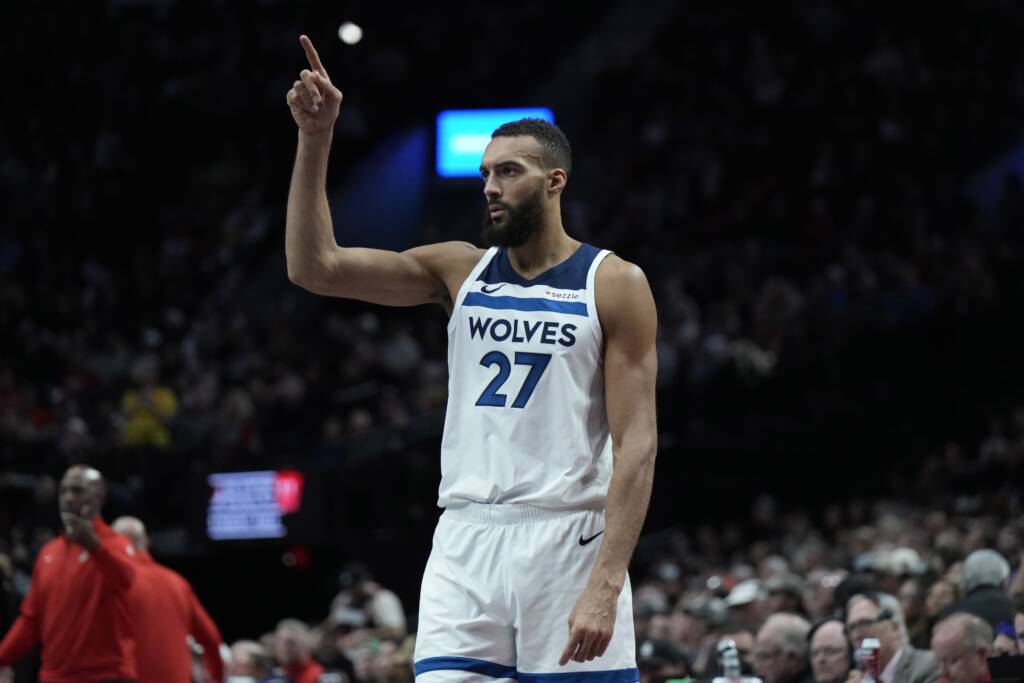The way bigs have played in the NBA has shifted dramatically in the 21st century. From the era of punishing post-up big men to a new era of dynamic and versatile bigs, teams quickly began to simplify the roles of this position. Seeking out players who could operate as play finishers offensively and rim protectors defensively.
Teams prioritize vertical spacing and athleticism to impact both sides of the ball while not worrying about lengthy possessions with the ball in their hands and the likely defensive deficiencies that come with the archetype.
Ultimately, this gives these players a set role where they can still have a massive impact on the game. It also allows perimeter players to initiate the offense and scoring.
For the Timberwolves, Mike Conley moves the ball effectively as a ball mover, Nickeil Alexander-Walker is an effective skip passer, and Donte DiVincenzo has brought juice as a dynamic drive-and-kick threat. However, nobody has shown more flashes of improvement as a passer and connector than Rudy Gobert to begin the season.
Changes within the game and the birth of league-wide adapted tactics have a trickle-down effect, creating a constant back-and-forth of counters. In the case of these bigs, finding more technically skilled players has begun to make a comeback.
The league’s best play-finishers and rim-protectors can still get by without issue. But the average athletically gifted big may lack technical skills, and opponents could still pick them apart, opening up a new lane for success.
If opponents ignore these bigs defensively, finding a way to keep them involved and mask their deficiencies is the only route to success. There have to be counters if defenses disregard a player completely. Therefore, teams started putting the ball in their hands. Not to the point of initiating offense as a ball handler but stretching responsibilities within their already existing role.
Much of this has come through operating in the short roll. The bigs would catch the ball around the free throw line off a ball screen and survey the court for potential kickouts or ball reversals.
Dynamic ball handlers will draw plenty of attention. Players like Steph Curry and Damian Lillard revolutionized PnR play by easily pulling up from three off ball screens and forcing defenses to extend their coverage.
The extended defensive coverage singles out the rolling big man. Defenses cannot account for the roller when blitzing the ball-handler to get the ball out of their hands or playing at the level of the screen to limit the three-point jumper. Defenses will also not stray from the players surrounding the arc because they are likely shooting threats. Therefore, focusing on the weakest link, the roller, is wise.
These circumstances directly apply to Rudy Gobert and Anthony Edwards, Minnesota’s most valuable players.
As an overall scorer and 3P shooter, Edwards’s stature has garnered multiple defensive coverages. The No. 1 priority of Minnesota’s opponents is to stop Ant from getting hot, and they would much rather make his teammates beat them. While Edwards can still find his shots and be one of the league’s most effective scorers, the Wolves must adapt offensively.
Karl-Anthony Towns was Minnesota’s secondary creator, but much of that came from him being the second option rather than working off Ant’s gravity. Julius Randle is in a similar situation after the trade. He isn’t linking directly up with Edwards to begin their first 10+ games together. Someone has to be that connective piece.
Gobert aligns perfectly with that new generation of bigs, operating offensively as a screener and play finisher. That gives him enough of a role offensively to shine on the defense. It has been a long journey for Gobert to achieve offensive balance. His hands hinder him, and he doesn’t offer much as a ball handler. Still, like many other Bigs around the league, Gobert has adapted.
It’s not a gaudy number, but Rudy Gobert’s 2.1 assists per game to begin the season would be a career-high. He has shined the most as an inside-to-outside passer, connecting Ant to the rest of the offense through the short roll.
Gobert also impacts the game as a reset point. He gives the ball-handler their live dribble back, uses his body to shield away defenders, and creates separation for Anthony Edwards and others.
Often, Gobert does this through simple “Get” actions. In doing so, Gobert allows the ball-handler to operate in the two-man game through handoffs, rescreens, or fakes. Multifaceted actions have taken over the NBA, allowing players to make the correct reads based on how the defense presents itself. It is no easy task, and Gobert has grown in comfortability here.
He built chemistry with Mike Conley in Utah. However, his development with other teammates, like Anthony Edwards and Donte DiVincenzo, has brought instant flow to the offense.
Gobert will never break down defenses through his individual offense. Still, the Wolves must find ways to occupy him and keep the defenses from completely sagging off him. The next step is growing chemistry and trust among his teammates, and there have already been early examples of this alongside Ant.
Minnesota’s ceiling will ultimately come down to how much Rudy can offer offensively. With the new era of Wolves basketball post-KAT, it’s only more important for Rudy to continue to flash his playmaking and for the rest of the team to trust him to make these correct reads.

